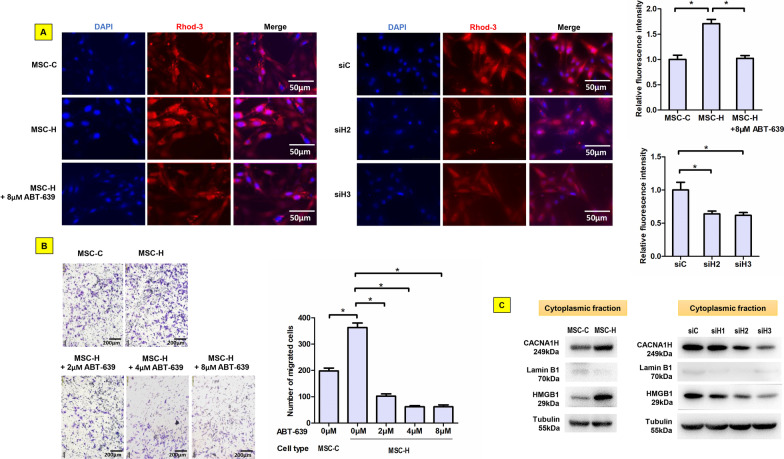Fig. 2.
Contribution of Cav3.2 T-type calcium channel to MSC-H cell migration. Rhod-3 probes emitted red fluorescence when reacting with intercellular free calcium. MSC-H cells displayed higher fluorescent intensity than MSC-C cells, suggesting a significant increase of intercellular free calcium in MSC-H cells. But the fluorescence was substantially abrogated by either blockage of Cav3.2 T-type calcium channel with 8 μmol/l ABT-639 or HMGB1 knock-down as shown in siH2 and siH3 cells (a). In transwell assay, the population of migrated cells was increased in MSC-H cells when compared to MSC-C cells but diminished with increasing doses of ABT-639 (b). MSC-H cells showed a significant increase of cytoplasmic HMGB1. Knock-down of HMGB1 markedly reduced cytoplasmic HMGB1 level as shown in siH2 and siH3 cells. The siH1 cells had little change of cytoplasmic HMGB1 expression and therefore was excluded from further studies. The expression of Cav3.2 T-type calcium channel encoded by CACNA1H was increased 1.5-fold in MSC-H cells but inhibited by HMGB1 knock-down as shown in siH2 and siH3 cells (c)

